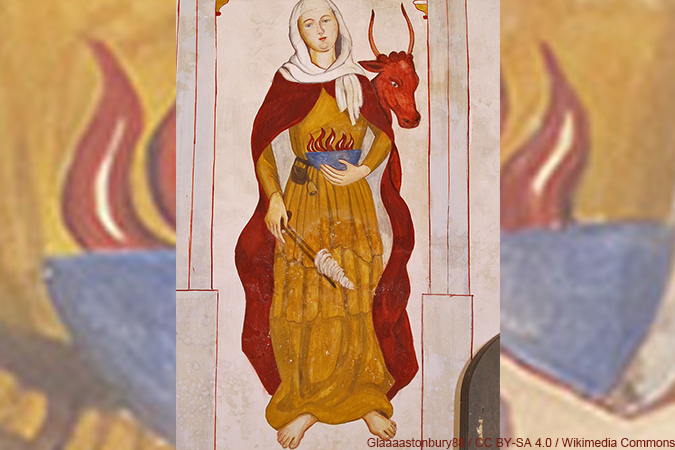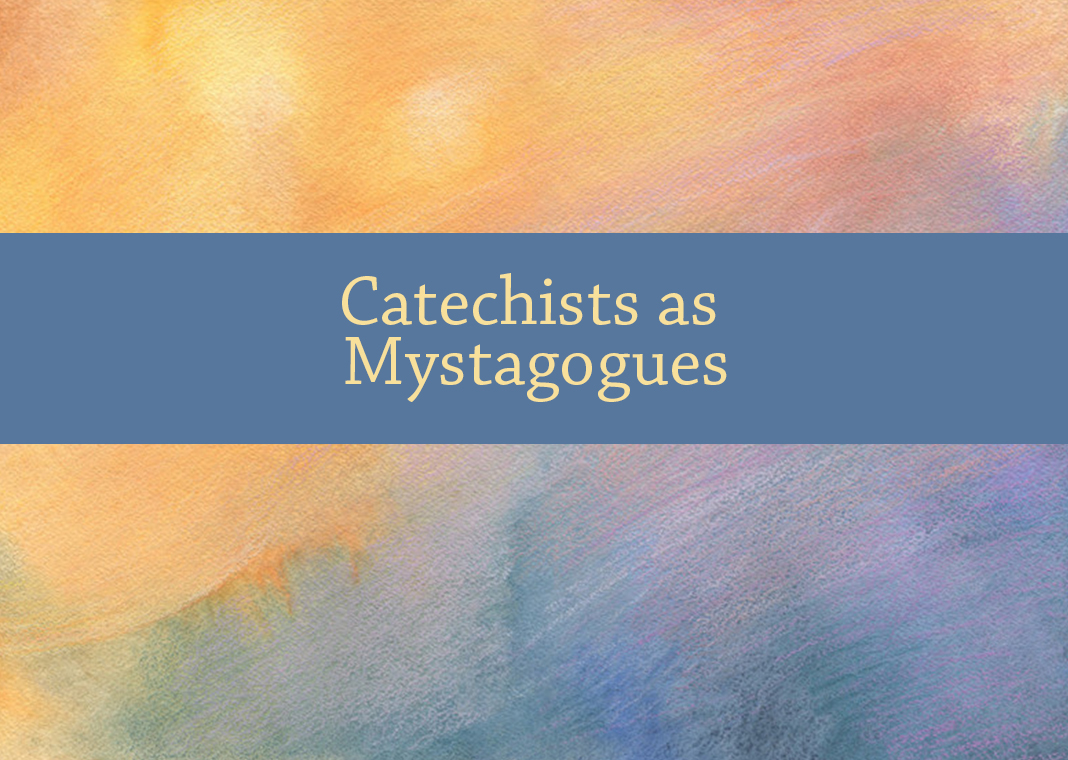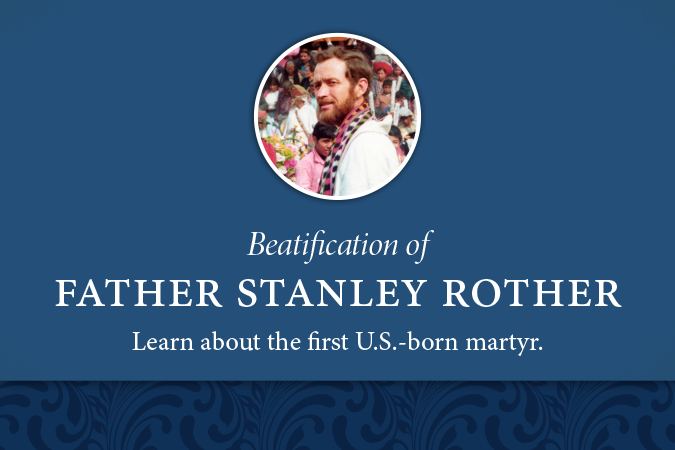
This is part three of a series exploring saints who lived as missionary disciples.
Often called “Mary of the Gael,” St. Brigid of Ireland is one of Ireland’s most beloved saints and was an important part of my life growing up in Ireland. The parish church in my hometown is called St. Brigid Parish, and we celebrated her feast day on February 1 by making St. Brigid’s crosses and welcoming the coming spring. Much of what we know about St. Brigid is a mixture of folklore and myth. Yet at the heart of this woman lies a missionary disciple who used her considerable gifts of healing, hospitality, and leadership to share the core Gospel message, which we call the kerygma.
St. Brigid was born approximately 453 in Faugart, County Louth to a powerful pagan chieftain name Dubhthach and his Christian slave Broicseach. After being disappointed that Brigid was not the son he wanted, Dubhthach banished Broicseach and sold her back into slavery. As Brigid grew, she was noted for her wisdom, beauty, and love of the poor and marginalized. When she came of age, she successfully searched for her mother and freed her from slavery.
We do not know the details of Brigid’s conversion to Christianity; undoubtedly her mother was a guiding influence in her life. For many years, Brigid pleaded to be sent to a convent, and finally her father relented. She then went on to found one of the most important centers of learning in Ireland at Kildare and used her considerable influence to make Ireland a more just society, where the gifts of men and women were equally recognized.
While the shamrock became identified with St. Patrick, St. Brigid became associated with a simple cross made of rushes. Supposedly woven by Brigid to explain the Paschal Mystery to a dying pagan chieftain, similar crosses are fashioned to this day in Ireland as protection against harm and fire. A poem by Emma Finnegan, which I learned as a child, encapsulates how St. Brigid evangelized by sharing the heart of the Gospel message:
Brigid wove a cross of rushes by a dying chieftain’s bed.
“Brigid what is that you’re making from the rushes there?” he said.Brigid said, “A cross I’m weaving, like the cross where Jesus died.”
“Who was Jesus?” asked the chieftain, “Why was this man crucified?”Brigid told the gospel story to a dying pagan King.
Lying silently he listened, never saying anything.Then he kissed the cross of rushes, saying, “Brigid, thanks to you,
I have come to love this Jesus, I will follow his way too!”
At the center of this poem is, of course, the sharing of the kerygma—the essential message of the life, Death, and Resurrection of Jesus Christ. We are called to witness the kerygma and place it at the center of our ministries. The preface of the new Directory for Catechesis reminds us of the words of Pope Francis that “we have rediscovered the fundamental role of the first announcement or kerygma, which needs to be the center of all evangelizing activity and all efforts at Church renewal.”
As missionary disciples, evangelizing through sharing the kergyma must be an integral part of our witness, just as it was for St. Brigid. How is the central Gospel message at the heart of your life? How are you incorporating the kerygma into your ministry?
St. Brigid of Ireland, pray for us.
St. Brigid of Kildare painting: photo by Glaaaastonbury88 used under CC BY-SA 4.0 via Wikimedia Commons, background effect added.





I missed the first 2 🙁
Juliette, just click on the link for “Saints as Missionary Disciples” at the bottom of the article or the similar phrase at the start of the article, and you’ll see the other parts.
Denise Gorss
Catechist’s Journey Editor